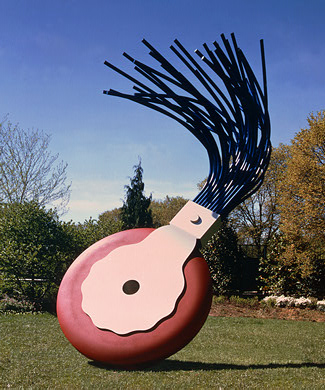Scale, in the design sense, deals with two things: size (actual and relative) and visual weight. Scale is something I talk about a lot with my clients because it can have such a dramatic impact on how we enjoy the space.
Let’s look at two extremes of scale, a townhouse backyard and an estate property. A townhouse backyard is a small space, so the natural instinct is to use small plants and furnishings to make the space “feel” bigger. This can throw off the human scale of a space, because if we’re using all low and dwarf plantings and underscaled furnishings, we can end up feeling like giants. In this example, a great way to keep things at a human scale without making the yard feel tiny would be to reduce the visual weight of what’s in it. A glass-top table with slender metal legs and matching chairs could be the exact same size as a chunky teak table, but it won’t dominate the space as much because it has less visual weight. With plants, you can use lighter, more transparent plants that feel lighter. Examples of these are grasses, nandina, and pieris.
If you want to see great examples of tight backyards designed brilliantly, you really need to check out British garden designers. Designer Matt James had a program on BBC called The City Gardener, which is the video embedded above. One of my favorite parts of this design is that he didn’t just shove everything up against the perimeter of the space. There’s plenty of room, but there are still layers of interest. Brilliant. Matt also has some great books, like The City Gardener: Urban Oasis (Amazon affiliate link)
At the other end of the spectrum is the estate property. Vast fields and rolling hills are beautiful to look at, but this vastness of scale doesn’t always feel comfortable to just hang out in. It helps to have something to shrink the space a little. That something could be a low wall at the edge of a patio, or a few small groves of trees to break up the size of the space. It’s a delicate balancing act. In the photo below, the pergola at the far right is definitely at human scale. It also looks like toothpicks and a Kleenex next to the imposing event hall next to it.
Once you have an understanding of scale, it can be a lot of fun to play with. A really common mistake that I see homeowners make in their landscapes is to go with too small a scale. I get it. That overstuffed leather chair-and-a-half that looked so cool at Ethan Allen ended up dominating your den and your spouse has never let you live it down. Guess what? Outside, we have bigger spaces and a 70,000 foot ceiling. It’s possible to go too big for the space, but you have to work at it.That’s why I like sculptures that play with scale, like this one:

Next up: proportion!


Very timely post Dave. My last job of the year I had an issue with a picket fence. It was something we subbed out and weren’t on site during installation. When I showed up the next day, the fence just didn’t look right. I never gave the height difference between 3′, 3.5′ and 4′ much thought. Even though the fence was only 4 foot, it was too large for the space. First thing this spring we will deal with making the scale of the fence more appropriate for the size of the space. Live and learn.
Thanks for the comment, Rich! Scale is one of those things that when it works, most folks don’t know why it works, but when it doesn’t – oh boy, it shows. For me that’s the best part of maintaining relationships with clients, since we get the opportunity to periodically re-evaluate the results and make minor tweaks.